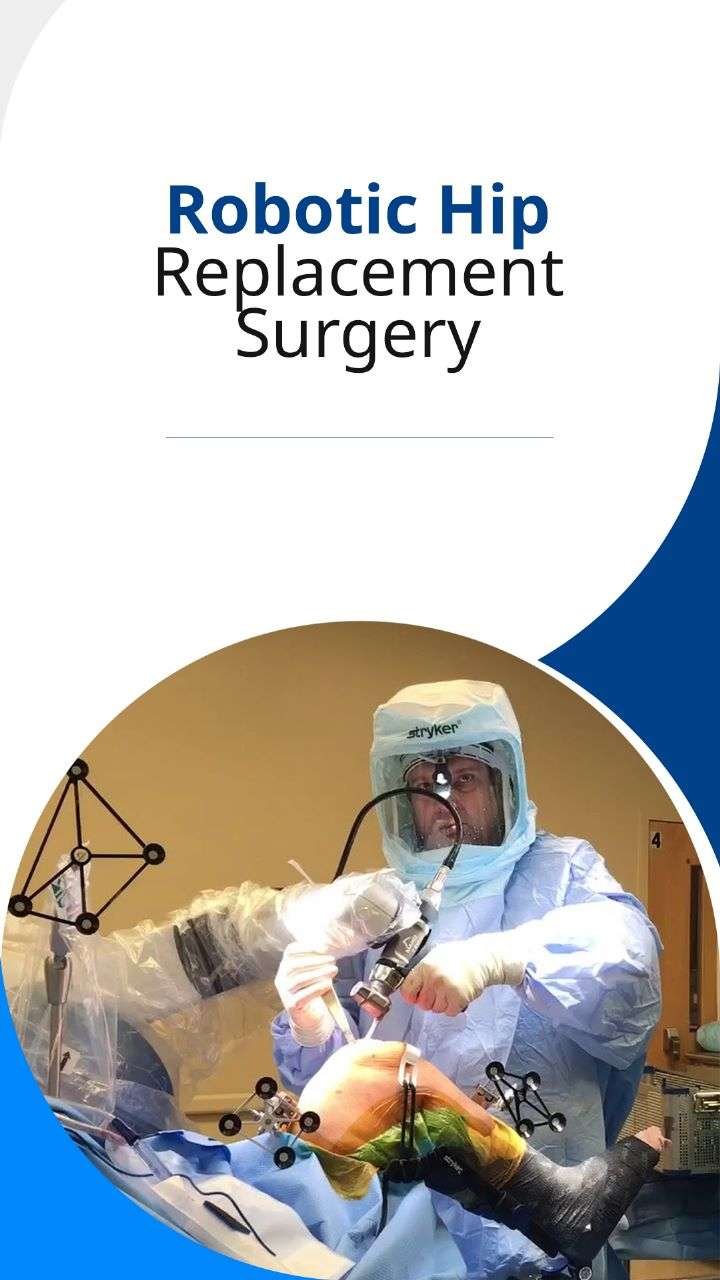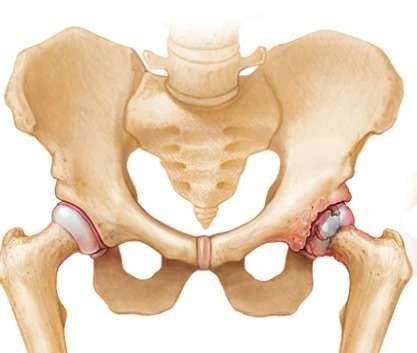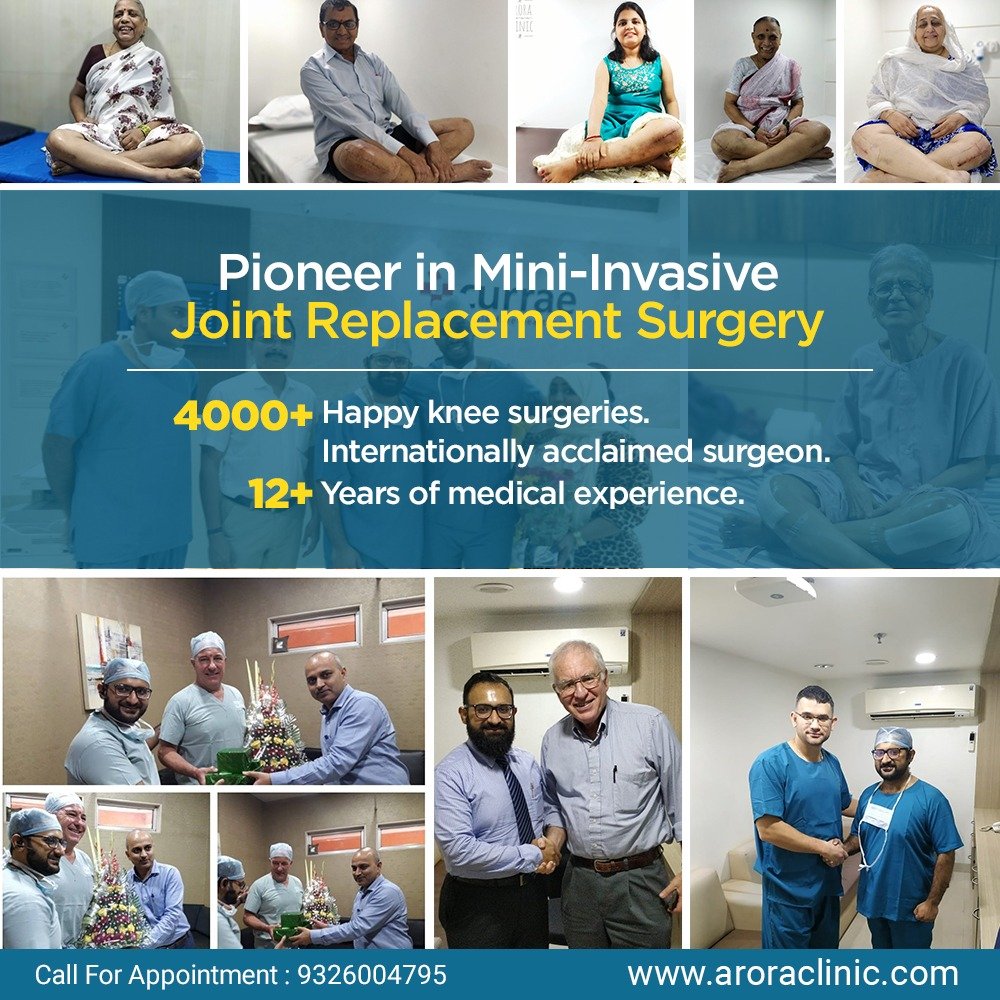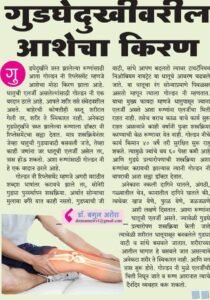
In the realm of orthopedics, a remarkable evolution has taken place with the advent of Robotic Hip Replacement Surgery. This groundbreaking approach is reshaping the landscape of hip joint interventions by amalgamating state-of-the-art robotics and the finesse of skilled surgeons. Characterized by its minimally invasive technique, this procedure ushers in a new era of precision and efficacy in addressing hip joint ailments. Through the synergy of 3D imaging and real-time feedback, the robotic arm orchestrates an unparalleled level of implant accuracy, leading to heightened outcomes and diminished complications. As a result, patients experience not only diminished pain and expedited recovery but also an augmentation in joint functionality, enabling them to swiftly resume their daily routines. The hallmark of this procedure lies in its bespoke methodology, ensuring an impeccable fit for every individual and thereby optimizing the trajectory of long-term success. As the horizon of technology continues to expand, the promise of Robot-Assisted Hip Replacement Surgery shines brightly, illuminating the path to relief for those grappling with hip joint afflictions.
In the realm of orthopedic excellence, hip replacement stands as a testament to success. Elevating this triumph further, the integration of robotics into the procedure ushers in a new echelon of achievement, where precision and accuracy flourish. The profound advantages of robotics within hip replacement surgery encompass
Embracing the patient’s unique anatomy, the robotic planning system constructs an intricate 3D model of the hip joint. This bespoke visualization empowers surgeons to craft surgical strategies that resonate harmoniously with each patient’s distinct physiological composition.
A symphony of accuracy is orchestrated as the robotic arm harmonizes with the surgeon’s dexterity. This tandem enhances precision during femur cutting, acetabulum reaming, and implant component placement. A striking reduction of up to 94% in inaccuracies is achieved, dimming the shadow of leg length disparities, dislocations, and the complexities typically associated with traditional hip replacement.
Embarking on a journey dictated by the 3D model’s intricacies, the robotic realm ensures that every surgical instrument adheres to the confines of the safe zone. With meticulous adherence, the positioning and angulation of implant components converge remarkably close to their meticulously planned trajectories.
As the robotic arm navigates intricate passages, a symphony of precision unfolds, creating a ballet of surgical artistry. The result is a minimally invasive procedure that orchestrates minimal disruption to the encompassing tissues. The anterior approach, propelled by the delicate prowess of robotics, sidesteps the need to sever any hip muscles, further amplifying patient recovery.
The promise of improved outcomes illuminates the path as substantiated by an extensive research endeavor undertaken by the American Hip Institute. Encompassing 162 patients, this study followed their journey for two years post-surgery. The realm of robot-assisted hip replacement unfolded its benefits, with patients experiencing over a twofold increase in feeling their hip had regained its natural functionality, akin to an unburdened hip.
When osteoarthritis takes a toll on the hip joint, inducing excruciating pain, stiffness, and hindrances in day-to-day activities, the beacon of hope emerges in the form of hip replacement surgery. This procedure stands as a potent remedy to alleviate symptoms and restore a semblance of normalcy.
In the realm of rheumatoid arthritis, a chronic autoimmune malady, the juncture for hip replacement surgery surfaces when the hip joint succumbs to significant distress, causing persistent pain and compromised mobility.
In cases where hip arthritis is a consequence of prior injuries or fractures, the curtain rises on post-traumatic arthritis. When conventional therapies fall short in assuaging pain and functional limitations persist, the recourse of hip replacement surgery beckons.
When the supply of blood to the femoral head falters, paving the way for bone tissue demise and potential joint collapse, avascular necrosis takes its toll. In the wake of failed conservative interventions and escalating symptoms, hip replacement surgery emerges as a viable option.
In intricate instances of hip fractures, especially in elderly individuals with brittle bones, the avenue of hip replacement becomes the avenue to restore stability and function to the hip joint.
Developmental anomalies in the hip joint, denoted as hip dysplasia, can usher in untimely wear and tear. As traditional measures lose their potency in managing pain and the hip’s function experiences a marked decline, the proposition of hip replacement surgery gains prominence.t.
At RKRS Center, a realm of cutting-edge solutions is cultivated, particularly in the realm of Robotic Knee Arthroscopy Surgery. Our distinguished orthopedic surgeon, at the helm of RKRS Center, specializes in pioneering, minimally invasive resolutions for knee predicaments, hinging on the precision of robotic technology. Our pursuit centers around optimal patient outcomes, harnessing both expertise and the finesse of robotic-assisted surgery.

Hip replacement surgery, scientifically recognized as hip arthroplasty, embarks on a journey of replacing a beleaguered hip joint with an artificial counterpart, aptly named a prosthesis. Within India’s medical landscape, a plethora of surgical options stand poised for the conduction of hip replacement procedures.
Within the realm of interventions, hip resurfacing emerges as a distinct tune. This surgical rhapsody involves capping the femoral head with a metal visage rather than removing it in its entirety. The realm of the socket and its beleaguered cartilage assumes a fresh identity as a metallic chalice. This surgical serenade typically finds its stage when the spotlight shines on young, vivacious patients boasting robust bone quality.
This chapter in the surgical opus finds its moment when only the femoral head bears the scars of fracturing, with the adjacent socket maintaining its vigor. In these vignettes, the femoral head gains a metallic surrogate, while the socket’s integrity remains preserved, fostering a harmonious coexistence.
The overture to Robot-Assisted Hip Surgery unfolds with a flourish of investigative notes. The patient’s pelvis takes the stage, undergoing a symphony of X-rays and CT scans. These captured echoes are transformed into the heart of the robotic system, birthing a tridimensional facsimile of the hip joint. This canvas envelops the femur, the socket (or acetabulum), and any territories marred by arthritis’s brushstrokes.
In this artistic milieu, the orthopedic robotic surgeon takes center stage, crafting a preoperative narrative characterized by surgical finesse. Through this choreography, the optimal positioning of femoral and tibial components is meticulously charted. Patient proportions, leg angles, articulation centers, and the ballet of the femur within the socket – all these variables are interwoven into a bespoke surgical score, yielding a symphony of tailored surgical designs that resonate with the surgeon’s mastery.
The tapestry of the surgical overture unfolds further, with the composer’s hand crafting a patient-specific opus. This composition finds its stage in the robot’s interface within the
The stage is set for the pivotal act, where the robotic hip specialist takes center stage. The anterior hip replacement surgery unfolds with a ballet of precision that defies the reach of conventional manual instruments. A cornerstone in this ballet lies in the haptic boundary, a sentinel guarding against the intrusion of soft tissue trauma. In a chorus of scientific literature, the saga of Robot-Assisted Hip Replacement Surgery unfurls, adorned with laurels such as curtailed post-operative agony, elevated patient contentment, amplified range of motion, a reduction in opioid dependence, abbreviated hospital stays, and the minimization of readmissions linked to procedural intricacies.
Dr. Bakul Arora, a distinguished Robotic Orthopedic Surgeon, brings forth a legacy of excellence spanning over 12 years in the medical realm. Based at the esteemed Arora Clinic in Thane, his remarkable journey in the field has been characterized by unwavering dedication to precision, innovation, and patient-centric care.
Dr. Arora’s mastery lies in the realm of Robotic Knee Replacement Surgery and Robotic Hip Replacement Surgery, where he has honed his skills to deliver transformative outcomes. With a deep-rooted understanding of cutting-edge robotic technology, he consistently leverages its potential to redefine the landscape of orthopedic surgery. His proficiency extends beyond the operating room, encompassing a holistic approach that addresses each patient’s individual needs and concerns.
Throughout his illustrious career, Dr. Arora has carved a niche as a compassionate healer, actively engaging with patients to ensure their well-being throughout the surgical journey. His commitment to refining surgical techniques, combined with a compassionate bedside manner, has earned him the trust and respect of both patients and peers alike.
As a visionary in the field, Dr. Bakul Arora’s legacy is etched in his relentless pursuit of excellence, transforming the lives of countless individuals through his exceptional skills and expertise in Robotic Knee and Hip Replacement Surgery. At Arora Clinic, patients receive not only medical care of the highest caliber but also the assurance that their well-being is entrusted to the hands of a true pioneer in the world of orthopedic surgery.
The recovery time for a robotic hip replacement varies from patient to patient. Generally, patients can expect to stay in the hospital for a few days after the surgery. However, the full recovery period may range from 4 to 6 weeks before patients can resume normal daily activities. Physical therapy plays a crucial role in the recovery process, helping patients regain strength and mobility in the hip joint.
The duration of robotic hip surgery depends on several factors, including the complexity of the case and the surgeon’s experience. On average, robotic hip surgery takes approximately 1 to 2 hours in the operating room. The advanced robotic technology allows for precise and efficient movements, contributing to shorter surgical times compared to traditional methods.
The cost of robotic hip replacement in India can vary depending on the hospital, surgeon’s fees, location, and the specific implant used. Generally, robotic hip replacement surgery may be slightly more expensive than traditional hip replacement due to the advanced technology involved. However, it’s essential to discuss the cost with the healthcare provider, as some insurance plans may cover a portion of the expenses.
Both traditional and robotic hip replacement surgeries are effective in treating hip joint issues. However, robotic hip replacement offers several advantages, including enhanced precision, reduced complications, and quicker recovery. The choice between the two surgeries depends on the patient’s individual condition and the surgeon’s recommendation
Robotic hip replacement is considered an improvement over traditional hip replacement due to its greater accuracy and control. The robotic arm aids the surgeon in executing the surgery with exceptional precision, resulting in improved implant placement and better outcomes for patients. Additionally, robotic surgery typically leads to a faster recovery and reduced post-operative pain.
Robotic hip replacement surgery has shown promising success rates. While individual results may vary, studies have indicated high rates of satisfaction among patients who have undergone the procedure. The advanced technology of robotic surgery contributes to its success by minimizing complications and improving the overall quality of life for patients.
Yes, robotic surgery often leads to a faster healing process compared to traditional surgery. The minimally invasive nature of robotic hip replacement involves smaller incisions, resulting in reduced tissue trauma and quicker recovery times. Patients typically experience less post-operative pain and can return to their regular activities sooner than with conventional surgery. So robotic hip surgery recovery is very faster then traditional hip surgery.
Robotic hip replacement surgery is designed to be as minimally invasive and pain-free as possible. While some discomfort is expected after any surgical procedure, advancements in pain management techniques and smaller incisions used in robotic surgery contribute to reduced post-operative pain for most patients.
Robotic hip replacement surgery may be slightly more expensive than traditional hip replacement due to the advanced technology involved. However, it’s essential to consider the potential benefits and improved outcomes associated with robotic surgery, which may justify the added cost for some patients.
Most patients can begin walking with the assistance of a walker or crutches shortly after robotic hip replacement surgery. As the recovery progresses and physical therapy is incorporated, patients typically regain the ability to walk independently within a few weeks. The exact timeline may vary based on the individual’s health and response to rehabilitation.
Patient preference for robotic hip replacement surgery is increasing due to its reputation for precision, quicker recovery, and reduced post-operative pain. Many patients appreciate the benefits offered by robotic technology and are willing to choose this advanced approach for their hip replacement surgery. However, individual preferences may vary, and it’s essential to consult with a qualified orthopedic surgeon to determine the most suitable surgical option for each patient’s specific needs.
We are really honored to receive this and we will continue to serve the society better than ever We aim to provide the world-class Knee/Hip Replacement Surgical (Minimal Invasive Surgery) treatment to every patient suffering from knee or hip pain and at the same time make their life pain-free and happy.

Dr. Bakul Arora’s Joint Replacement Clinic is also known as “Arora Clinic” which is located at Hiranandani Meadows in Thane, within a very convenient proximity to Mumbai. Arora Clinic dedicated clinic for Knee Replacement surgery and all kinds of Orthopaedic treatments and surgeries
The Arora Clinic is one of the most advanced Orthopaedic clinic in Thane region and dedicated to providing the best, personalised healthcare with a breadth of surgical and medical expertise. Arora Clinic offers the modern surgical treatments like “Minimally Invasive Knee Replacement Surgery” which is also called as “PAIN-LESS SURGERY” for any complex knee diseases.
Dr. Bakul Arora is a Consultant Joint Replacement & Orthopaedic Surgeon is one of the leading Knee Replacement Surgeon in Thane and Mumbai with over 4000+ successfully surgeries. Dr. Bakul Arora specialises in Mini-invasive techniques which offer multiple benefits to patients. He does the surgery using Subvastus approach for Knee Replacement surgery and Direct Anterior Approach for Hip replacement Surgery . This new techniques has many advantages for patients like its pain-less , stich-less surgery, patients walks on the same day after surgery, no blood loss, faster recovery etc.


Knee replacement is required for advanced arthritis of the knee joint, producing painful limitation of movements and restriction in activities of daily living. Knee replacement as a solution should be offered when all non–surgical methods of treatment failed and painkiller medicines and injections also failed to reduce the Knee and hip pains.
Knee replacement can be total or unicondylar, depending on the number of compartments involved. Among the total knee replacement, there are two popular designs- Cruciate Retaining, and Posterior Stabilized. The decision for the design is best taken by the operating orthopedic surgeon based on the integrity of ligaments. Patella resurfacing as a routine is a debatable subject.
Yes, most knee replacement surgeries are minimally invasive, with numerous benefits to the patient, including smaller incisions, less tissue trauma, bleeding and post–operative pain, shorter hospital stays, faster recovery, and earlier return to work and activities — in weeks rather than months. Advantages of Minimally Invasive Knee Replacement Surgery. Patients Start walking in few hours of surgery. Patients start climbing the staircase from second day of his surgery. Patients Discharge with in 3 Days from the Hospital after surgery. No blood loss during the surgery, no blood Transfusion required. Less Physiotherapy.( No Physiotherapist required for home) Less Antibiotic. Stitchless Surgery. Recovery time is just two – three week.
Bilateral knee replacement in the same sitting, can be performed if both the knee joints are damaged to the same extent, however, the medical condition of the patient, and bone quality must be kept in consideration.
Surgery through Minimally Invasive technique patients start walking on the same day and staircase climbing starts from the second day of surgery. Patients can resume his work after 3 – 4 week.
The most significant risks include Infection, Deep vein thrombosis,and Aseptic loosening of implants. The risks correlate with the co-morbid medical condition, and must be discussed with the patient before surgery.
Patients normally require hospitalization for 3-4 days in single knee replacement, and up to 5-6 days in both knee replacement surgery
A single knee replacement takes approximately 90 min- 2 hours. Both knee replacement surgery takes approx 2-3 hours.
Years ago, knee replacement surgery was reserved for elderly patients due to a high complication rate and lack of implant durability. Modern techniques have allowed orthopaedic surgeons to base surgical decisions on a patient’s pain and disability, and not necessarily chronological age. Most patients who undergo knee replacement are between the ages of 50 and 80, but surgeons evaluate patients individually and primarily on their physiologic age and demands.
Patients can resume his/her light work after discharge from the hospital, no need for rest.
Patients are given epidural anesthesia for surgery, and post op pain relief. They are expected to follow instruction from physiotherapist regarding muscle training.




⇒ Wockhardt Hospital Mumbai Central, Mira road & Vashi
⇒ Apollo Spectra Hospital, Tardeo and Chembur
⇒ Cloud 9 Hospital, Malad
⇒ Criticare Hospital, Andheri
⇒ Arora Clinic, Hiranandani Meadows
⇒ Bethany Hospital, Vasant Vihar
⇒ Currae Hospital, Kapurbawdi
⇒ Horizon Hospital, Ghodbunder
⇒ Infinity Hospital, Majiwada
⇒ Lakecity Hospital, Khopat
⇒ Oscar Hospital, Majiwada
⇒ Drone Hospital, Bhiwandi
Arora Clinic, Shop No. 13, Block 2, Emerald Plaza, Hiranandani Meadows, Glady Alvares Road, Behind Standard Chartered Bank, Thane west – 400610
Contact: +91 93260 04795
Managed By Hopeland Healthcare @ All Rights Reserved 2025.
WhatsApp us